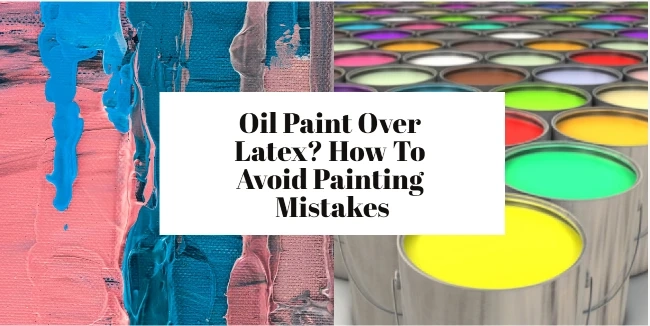The aesthetic sense of mankind has always appreciated true art in any form, either a sketch drawn on a piece of paper or the beauty of architectural design in the form of mesmerizing buildings. In simple terms, the term art is none other than the perfection in the vibrant colors filled in the drawn lines. This should not come as a surprise that the skill to paint and draw is regarded in very high terms, even as seemingly menial as house painting work.
House painting is one of the most demanded skills nowadays because it can give a brand-new look to your old and dull house. However, it might be expensive for you to hire a team of professionals to do this task, so, you might be wondering to do this by yourself, and have some new creative and productive experience. In such cases, it is better to focus on what not to do rather than focusing on what to do. This could help you to avoid blunders and give a clean and clear look to your work.
Oil Paint Vs Latex Paint
Oil painting is much more popular than other forms, like sketching, drawing, and etc. Its popularity is because of the versatility of oil paints which are easy to blend, slow-drying time - allowing the artist to redesign its artwork and making the corrections. But there are some issues with oil paints, firstly its odor is unbearable for some people and secondly, precautions need to be taken so that dusty grains do not fall on the wet paints.
The latex paint is trouble-free to work with and it dries off quickly. Latex painting is good for common painting projects which include painting your wall, ceiling, or furniture. However, it is not that durable and the luster and smoothness might not be up to the mark for some people who need to have more reflective surfaces.
Common Painting Mistakes And How To Avoid Them
From the selection of medium to the nature of paint and color, there are many mistakes that you can make while enhancing the look and feel of the surface. The cause of this could be the oversight on your part while preparing and studying things you don’t know.
In this post, we will cover some of the most common mistakes that amateurs while taking up painting projects for their homes, offices, etc. They range from general to-do things to the selection of suitable painting material according to the nature of your surface. So, read thoroughly and you will find practical tips to avoid mistakes while painting.
Not Covering The Furniture & Flooring
When you count all the costs involved in this negligence, including paint-related insurance claims and so on, this could one of the most expensive mistakes that anyone could make while preparing for the paint job. It is clear to anyone that bare surfaces will catch the arbitrary splashes and paint flicks. This can cost you a lot, so covering your belongings with a suitable medium could be the first step in the right direction to save yourself from dear penalties.
If you need to cover the furnishings of your rooms like a pro, the best way is to spread tarp all over them and cover it from all sides not only the top. After that, you can apply tape on the seams and pack it. this will save them from any stray splash. You should not underestimate the sneakiness of paint drops. There are instances where professionals are left baffled on how paint reached under several layers. There is no science behind it, just cover it and you will be good to go. The angles to which paint can spill are crazy, or it is just a plain, simple mistake on your side by letting the paint can tip while you are on a ladder.
Drops sheets can be a great candidate to mask the furnishings but the dust from sanding can be deposited on the furniture through it. After covering the furniture comes the turn of the floor. There are many who would advise you to let it be, but it is always better to go for the drop sheets on the floor. They can handle big droplets much and only a little paint can seep through them on the floor which can be wiped with ease.
You cannot use plastic everywhere in your house to cover paint marks and splashes. Here are the reasons why:
• When you go for the plastic on the floor, there will be no absorption of paint on this surface. Once, you step on it, you will carry the paint and spread the stains in the places where the floor is not covered.
• Paint on plastic can be a slippery combination and makes you slip on the surface when you step on it. This could put a serious risk in the form of fall and slippages.
Drops sheets could be the perfect solution to the stains by paint without putting so much on the line. The best part of having a drop sheet is that after removing it once the job is done, you can vacuum the place and clean it with almost no trouble at all.
Read more about Painting



